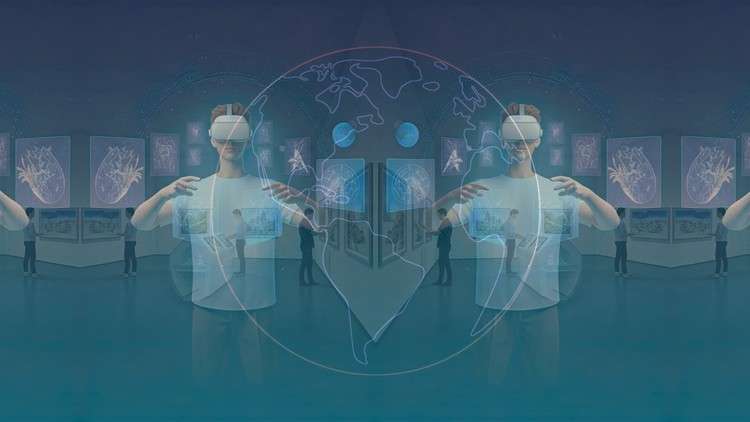
Integrating IT: From Collection Management to Digital Cataloging – Online Exhibitions Marketing E-Commerce and NFTs
What you will learn
The Digital Revolution in Art Galleries
Digital Cataloging: Preserving Art in the Digital Realm
Collection Management Systems: The Digital Backbone
Online Exhibitions and Virtual Tours: Breaking Physical Boundaries
Digital Marketing Strategies for Art Galleries
Mastering Social Media for Art Galleries
E-Commerce and Online Sales: The Digital Marketplace
The Essence of Art Gallery Management
The Digital Revolution in Art Galleries
IT Solutions for Gallery Operations
Enhancing Visitor Experiences through Technology
Digital Marketing for Art Galleries
Benefits of IT Integration in Galleries
Future Trends in Art Gallery Technology
Database Management Fundamentals
Metadata Standards for Art Collections
Popular Collection Management Systems
Key Features of Collection Management Software
Hands-on Experience with Software Tools
Integration with Gallery Operations
Future Trends in Art Gallery Management Systems
Digital Cataloging Techniques
Best Practices for Artwork Photography
Scanning Techniques for Artworks
International Documentation Standards
Creating Detailed Art Records
Digital Asset Management for Art Collections
Principles of Effective Website Design
Content Management Systems
Creating and Maintaining a Gallery Website
Tools for Virtual Art Exhibitions
VR AR Technologies in Virtual Tours
Case Studies: Successful Online Exhibitions
Understanding Digital Marketing Basics
Mastering Email Marketing for Galleries
SEO Strategies for Art Galleries
Content Marketing for Art Promotion
Leveraging Instagram for Art Galleries
Facebook Marketing for Art Galleries
Building an Engaged Online Art Community
E-Commerce Platforms for Art Galleries
Setting Up Your Online Art Store
Managing Your Online Art Gallery
Digital Payment Systems for Art Galleries
Integrating Payment Gateways
Ensuring Secure Online Transactions
Measuring Success in Online Art Sales
Collecting Visitor Behavior Data
Analyzing Sales Data
Analytics Tools for Galleries
Reporting and Dashboard Tools
Enhancing Gallery Operations
Data-Driven Curation
Future of Gallery Analytics
The Importance of Cybersecurity in Art Galleries
Best Practices for Securing Gallery Management Systems
Securing Art Gallery Websites
Copyright Laws in Digital Art
Intellectual Property Protection for Digital Art
Ethical Considerations in Digital Archiving
Ethical Online Sales Practices
Artificial Intelligence in Art Curation
Machine Learning in Art Sales Predictive Analytics
Blockchain Technology in the Art Market
The Impact of NFTs on Digital Art
Project Management in Gallery Settings
Effective Communication in Art Gallery Management
Industry Insights and Networking in Art Gallery Management
Why take this course?
The course “Digital Transformation and IT in Art Gallery Management” explores the transformative impact of digital technologies and information systems on the operations, curation, and visitor engagement of contemporary art galleries. Digital transformation involves the comprehensive integration of digital technology into every facet of an organization, fundamentally altering its processes and value delivery mechanisms. In the realm of art gallery management, this transformation signifies a shift from traditional methods to innovative digital solutions that enhance efficiency, security, and the overall visitor experience.
At its core, digital transformation in art galleries includes the implementation of sophisticated IT systems for managing and cataloging collections, automating administrative tasks, and ensuring the security and preservation of artworks. Advanced digital tools facilitate better data management, allowing galleries to maintain accurate and accessible records of their collections. This not only streamlines internal operations but also supports research, provenance tracking, and compliance with legal and ethical standards.
Moreover, digital transformation extends to the creation of immersive, interactive experiences that can captivate and engage visitors. Virtual tours, augmented reality (AR), and digital installations offer new ways for audiences to experience and interact with art, making it accessible to a global audience. Online exhibitions and virtual galleries break down geographical barriers, allowing art enthusiasts worldwide to explore collections from the comfort of their homes. These technologies also provide educational opportunities, enhancing the learning experience for visitors of all ages.
The importance of digital transformation in art galleries is underscored by its numerous advantages. It enhances operational efficiency by automating routine tasks and improving data accuracy. Enhanced visitor engagement through interactive and personalized experiences can attract new audiences and retain existing ones. Additionally, digital tools enable better resource management, helping galleries optimize their use of space, staff, and finances.
This course is ideal for art gallery managers, curators, IT professionals in the arts sector, and individuals passionate about the intersection of art and technology. Participants will gain the skills and knowledge needed to implement and manage digital solutions effectively, ensuring that art galleries remain relevant and dynamic in an increasingly digital world. By embracing digital transformation, art galleries can enhance their operational capabilities, reach broader audiences, and provide richer, more engaging experiences for their visitors.